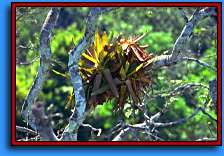| I n t e r v i e w
PTK
Well, almost without knowing what I was doing to myself, I decided to go to a secondary school that had a zoo. They were quite far-seeing, actually: they required biology of all students, and I can remember telling my parents, well, I’ll take it the first year and get it over with. Instead I had this just incredible interaction with the biology teacher, named Frank Trevor, who, in the space of three weeks, “flipped my switch” and got me interested in biology to the point where I will never have enough of it.
PTK
Editor’s Note: one of the purposes of Journals and the interactions which PTK brokers between world-class researchers and teachers and students is to provide a personal insight into what motivates their careers in science. PTK asked Dr. Lovejoy for his first reactions on visiting the rainforest, and what insights he thinks studying the rainforest provides. PTK What are your first reactions when you go to the rainforest? You know, when you think about going to the rainforest you think there are going to be animals all over the place and jumping out at you from behind trees, and that you’ll see a jaguar every three minutes, and things of that sort. In fact, it’s quite the opposite. When you go in, you first wonder, what’s the big deal? There are all of these trees there and they all look the same, and you hardly see anything moving at all—which is because everything’s hiding from everything else! And so it takes a little while to develop the perception to be able to see what’s going on there and to see the differences and really develop a sophisticated ability to understand the biology of the forest and all of its intricacies. |
| Tom’s Interview | 1 2 3 |
![]()
 As this excerpt makes clear, his interest in biology all started at school,
through the efforts of an enthusiastic teacher! (See “Millbrook in Peru” for more on Tom Lovejoy’s old school!)
As this excerpt makes clear, his interest in biology all started at school,
through the efforts of an enthusiastic teacher! (See “Millbrook in Peru” for more on Tom Lovejoy’s old school!)
 Well, part of it was the sheer beauty of living things,
which I’d never really looked at that way before, and also
the difference and the intricacies of how things fitted
together.
Well, part of it was the sheer beauty of living things,
which I’d never really looked at that way before, and also
the difference and the intricacies of how things fitted
together.